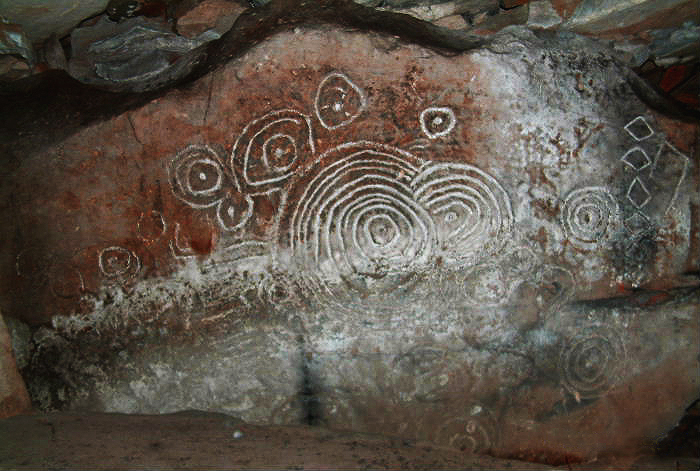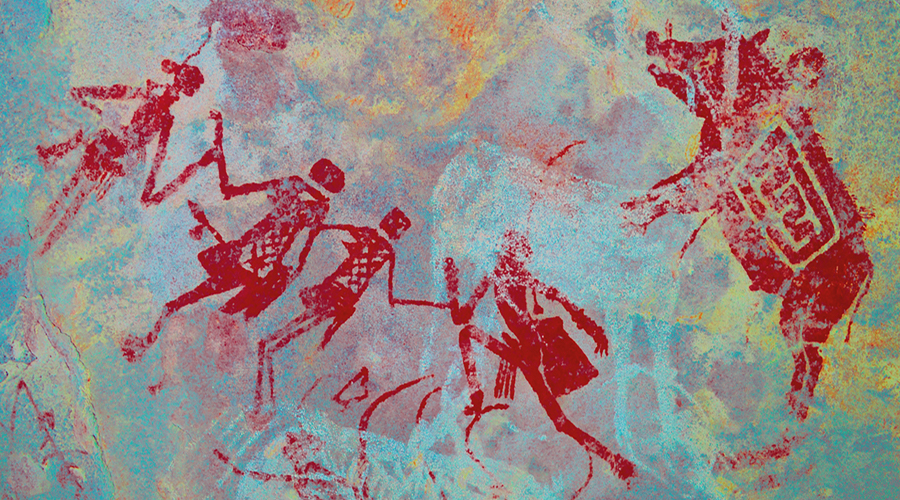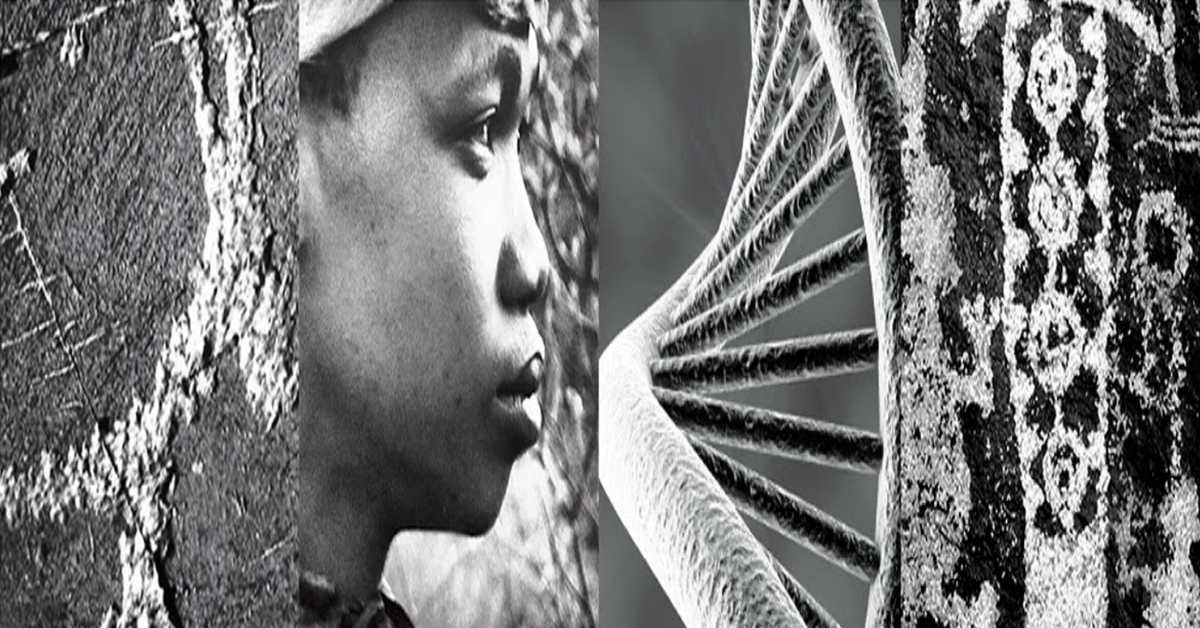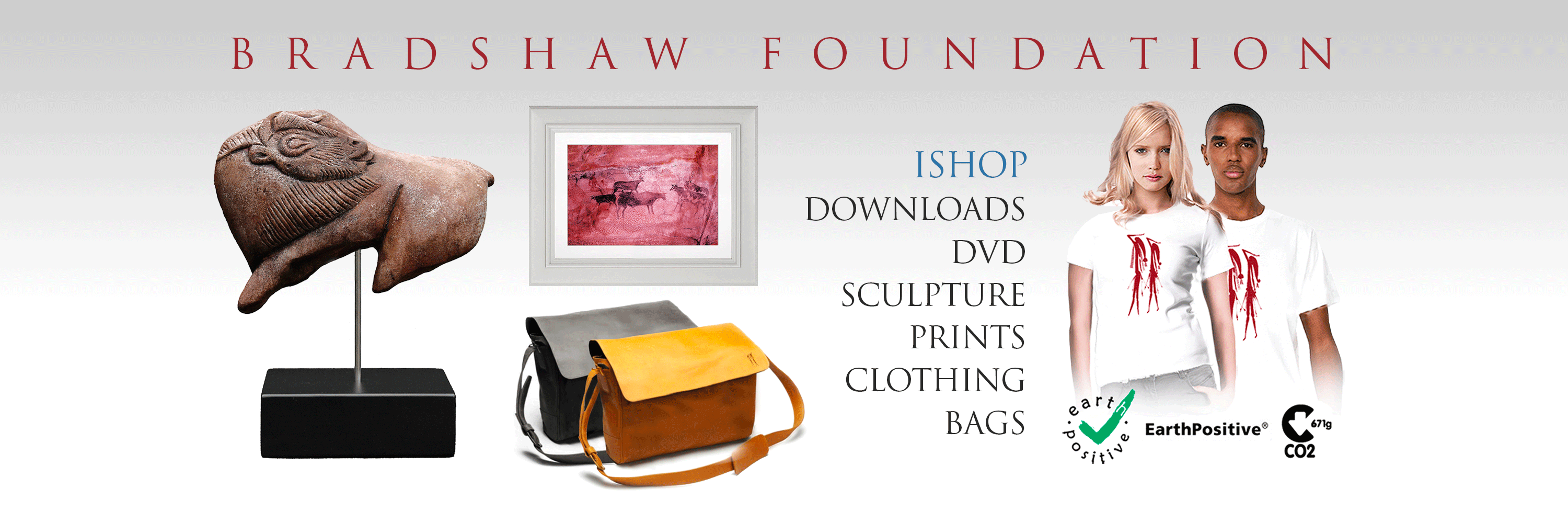


An online article by Sarah Griffiths for MailOnline - Were the ancient Irish the first to record an Eclipse? - reports on the 5,000-year-old carvings in Cairn L near Kells in County Meath, Ireland. The geometric designs may depict an ancient solar eclipse, specifically from 3340 BC.

Prehistoric stone monuments have been associated with astronomy; monuments were designed to help predict astronomical phenomena. For the early agriculturists and semi-nomadic peoples, who lived close to the cycles of the earth and the seasons, tracing the passage of time was essential.
Archaeologists and Irish archaeoastronomer Paul Griffin now believe this to be the case in prehistoric Ireland with the recording of an eclipse 5,354 years ago. The geometric carving is set in the wall of the mound known as Cairn L, situated strategically at the back of the chamber. The chamber has seven recesses, three on each side and one at the back.
Researchers Martin Brennan and Jack Roberts found that the position of the cairn means it is lit up by the sun in the mornings of ancient Celtic festivals, Samhain and Imbolc, which fall on the first week of November and the last week of February.
The cairn also has 18 decorated stones, one of which is a pillar stone known as 'The Whispering Stone' measuring 2 metres in height. When the sun rises, it hits the top of the tall stone and gradually illuminates the carvings at the back of the chamber as it rises. There are also 13 carvings of 'nested arcs' which researchers believe may represent a 'rising heavenly body'. Two stone spheres were also discovered when the mound was first excavated in 1865.
Visit Ancient Symbols in Rock Art:
http://www.bradshawfoundation.com/ancient_symbols_in_rock_art/index.php
by Bradshaw Foundation
Monday 03 February 2025
by Bradshaw Foundation
Friday 09 August 2024
by Bradshaw Foundation
Wednesday 24 July 2024
by Bradshaw Foundation
Thursday 04 July 2024
by Bradshaw Foundation
Monday 01 July 2024
by Bradshaw Foundation
Wednesday 20 March 2024
by Bradshaw Foundation
Tuesday 13 February 2024
by Bradshaw Foundation
Tuesday 13 February 2024
by Bradshaw Foundation
Thursday 01 February 2024
by Bradshaw Foundation
Tuesday 28 November 2023
by Bradshaw Foundation
Thursday 23 November 2023
by Bradshaw Foundation
Monday 20 November 2023
by Bradshaw Foundation
Tuesday 31 October 2023
by Bradshaw Foundation
Thursday 26 October 2023
by Bradshaw Foundation
Wednesday 20 September 2023
by Bradshaw Foundation
Monday 17 July 2023
by Bradshaw Foundation
Monday 03 February 2025
by Bradshaw Foundation
Friday 09 August 2024
by Bradshaw Foundation
Wednesday 24 July 2024
by Bradshaw Foundation
Thursday 04 July 2024
by Bradshaw Foundation
Monday 01 July 2024
by Bradshaw Foundation
Wednesday 20 March 2024
by Bradshaw Foundation
Tuesday 13 February 2024
by Bradshaw Foundation
Tuesday 13 February 2024
by Bradshaw Foundation
Thursday 01 February 2024
by Bradshaw Foundation
Tuesday 28 November 2023
by Bradshaw Foundation
Thursday 23 November 2023
by Bradshaw Foundation
Monday 20 November 2023
by Bradshaw Foundation
Tuesday 31 October 2023
by Bradshaw Foundation
Thursday 26 October 2023
by Bradshaw Foundation
Wednesday 20 September 2023
by Bradshaw Foundation
Monday 17 July 2023
Friend of the Foundation











